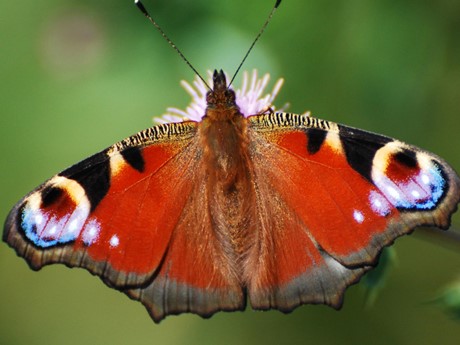What happens in autumn?
Lorienne Whittle, 17/08/2021
According to the meteorological calendar, autumn begins on 1 September, where as 22 September heralds the beginning of autumn 2021, if you go by the astronomical calendar.
For me, autumn is signified by nature; by dazzling sights of fruits and bright berries hanging from trees and hedgerows under a canopy of colour changing leaves.
Your recent phenology records and photos reveal how the first signs of autumn are already here. These include the tinting of leaves on silver birch and horse chestnut and first ripe fruit for dog rose, elder, rowan and hawthorn.
Hip-hip hooray!
The first records of dog rose ripe fruit are usually spotted from mid-August. These bright hips are often seen scrambling in hedgerows following the pretty late spring flower.
Dog rose has a number of uses. The hips can be made into syrup, well known for it’s vitamin C content. For a more nefarious use, scrape out the hairs inside the hips to make itching powder!

First ripe Dog Rose (Photo: Mary Kerby)

First ripe fruit Dog Rose (Photo: Mary Kerby)
Testing for rowan berry ripeness
Rowan trees are common in a variety of locations, often being planted in parks, gardens and streets. At this time of year they are particularly popular, brightening everywhere with their colourful berries.
Record first ripe fruit when the berries are soft to touch. Look out for when the rowan trees near you show full autumn tint and then in October we expect to be hearing about some bare trees. If you’ve been watching your tree for a number of years you might also want to add a record the amount of fruit your tree has produced this year.

Testing for rowan berry ripeness ( (Photo: Peter Gordon Smith))

Record first ripe rowan berries when they are soft to touch (Photo:Paula Murdoch)

You can also record rowan trees first tinting (Photo:Paula Murdoch)
Time for elder
Having filled the air with sweet perfume through May, those elder flowers left by eager pickers have now turned to clusters of plump berries. We want elderberries to be recorded as first ripe fruit when they have turned from green to black and are soft to touch. Elder berries are eaten by birds and mammals and can also be picked for cooking.

Ripe elder berries (Judith Garforth)

Record elder as first ripe when berries turn from green to black (Photo: Mary Kerby)

First tinting of an elder (Photo: Elizabeth de Quidt)
Hawes brighten up the hedges
Also known as the May-tree, after the month in which it usually blooms, hawthorn flowers are replaced with clusters of bright red fruits around this time of year. These berries, or ‘hawes’ as they are also known, are an important food source for birds such as fieldfares, redwings and thrushes.
Nature’s Calendar also tracks the arrival of fieldfares and redwings, who arrive from Scandinavia to over winter in the UK, so look out for these feathered friends too and record your first sighting.

Testing for hawthorn berry ripeness (Photo: Peter Gordon Smith)

Hawthorn berries (Photo: Linda Tillotson)
Brown and blotchy horse chestnut leaves: autumn tinting or leaf miner?
For Nature’s Calendar we ask you to record first autumn tinting on horse chestnut trees when several leaves on the same tree or branch have started to change colour. If you have recorded horse chestnut events before, if possible please continue to record the same tree.
You may notice that the leaves are going brown and blotchy early than expected, or recognise the effects of leaf miner moths. The larvae of this tiny moth forms burrows within the leaf tissue, resulting in leaf browning. If your tree is infected by leaf miner the leaves might brown or tint early. Please still record this as first tint. It would be really helpful if you could include a comment, noting this. The widespread infestation can then be taken into account when the results are analysed.

Horse Chestnut first tinting (Photo: Judith Garforth)

Conkers! First ripe fruit (Photo: Peter Gordon Smith)
Adopt an autumn tree
Autumn is a wonderful time in the UK, with the trees providing a true spectacle of colour. We’re asking people to select and record a tree near them. Autumn is a great time to start your own investigation of ‘a year in the life of a tree’ .
There’s plenty of tree species to choose from, so find one that fits in with your daily life – that way you’ll notice the first leaf tinting, or you might even be there later in the season when the very last leaf falls, signifying the time to submit a bare tree record.
Check out our phenology calendar for the many species and their individual events that can be recorded on Nature’s Calendar.

